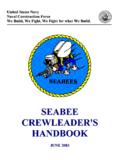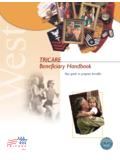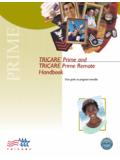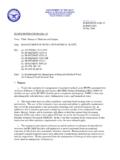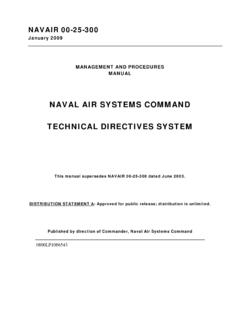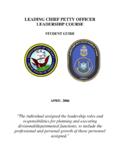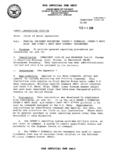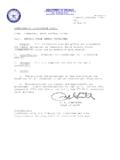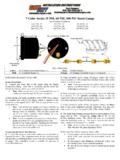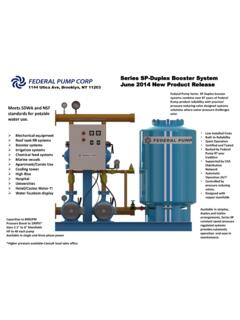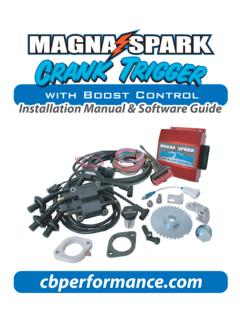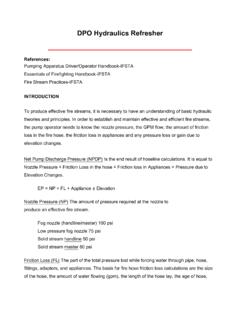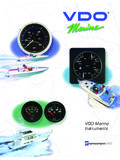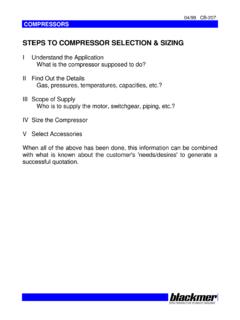Transcription of CHAPTER 4 JET AIRCRAFT FUEL AND FUEL SYSTEMS
1 CHAPTER 4 JET AIRCRAFT FUEL AND FUEL SYSTEMS The purpose of the AIRCRAFT fuel system is to deliver a uniform flow of clean fuel under constant pressure to the engine under all operating conditions. To accomplish this task, the fuel system must be properly maintained. The Aviation Machinist s Mate (AD) is responsible for maintaining and troubleshooting the fuel system, understanding the different types of fuels and their characteristics, and knowing the different types of AIRCRAFT and engine fuel SYSTEMS and their various parts. In general, AIRCRAFT fuel SYSTEMS are divided into two categories-the AIRCRAFT fuel system and the engine fuel system.
2 The AIRCRAFT fuel system consists of fuel tanks, float-operated transfer valves, selector and shutoff valves, and fuel tank boost pumps. The engine fuel system includes some combination of different parts. These parts are filters, fuel control units, engine-driven fuel pumps, flow dividers, pressurizing valves, drain valves, afterburner fuel controls, and fuel nozzles or injectors. The jet engine fuel system usually includes an emergency system to supply fuel to the engine in case of main system failure. In some cases, the emergency system is a duplicate of the main system.
3 However, in others the emergency system is not fully automatic and must be controlled by the pilot. For the non-automatic type emergency system, the pilot must accelerate and decelerate slowly, or there will be danger of rich blowout, lean blowout, stall, or overheating of the combustion and turbine areas. The AIRCRAFT fuel system and engine fuel system as well as the type, designation, and requirements of the AIRCRAFT fuels, are discussed in this CHAPTER . LEARNING OBJECTIVES When you have completed this CHAPTER , you will be able to do the following: 1.
4 Discuss the types of fuels used in Identify the operational properties required in aviation Describe a typical AIRCRAFT fuel Describe fuel system components and inspection Identify fuel sampling and contamination Discuss the major safety precautions and the basic procedures for fuel cell removal Describe external fuel tank components and their Discuss fuel system components and their When working around or with jet fuels always wear your proper Personal Protective Equipment (PPE) due to the following hazards; Slight to Moderate Irritant, Effects Central Nervous System Harmful or Fatal If Swallowed, Moderate fire hazard.
5 Avoid breathing vapors or mists. May cause dizziness and drowsiness. May cause eye irritation and skin irritation (rash). Long-term, repeated exposure may cause skin cancer. 4-1 TYPES OF JET FUEL The Military grades of jet fuel are designated by the letters JP followed by a number. The grade number merely shows the approximate sequence the fuel specifications were accepted by the military. North Atlantic Treaty Organization (NATO) codes show compatible fuel standards. When changing to a different fuel, it is usually unnecessary to drain out the old fuel.
6 Some AIRCRAFT prohibit fuel mixing or require different settings on some fuel components (fuel controls) when switching fuel grades. JP 4 JP 4 (NATO Code F 40) is an alternate fuel to JP 5 for United States Navy (USN) jet AIRCRAFT used at shore stations only. It is never used on ships. Its low vapor pressure reduces fuel tank loss and vapor lock tendencies. Its fuel density is pounds per gallon (ppg), and its flash point is below 0 degrees Fahrenheit ( F). When switching to JP 4 from JP 5, engine operating characteristics may change. Changes include easier starting, slower acceleration, lower operating temperature, and shorter range.
7 JP 5 JP 5 (NATO Code F 44) is the Navy s primary jet fuel. It is relatively safe to store, is thermally stable, and has high heat content per gallon. JP 5 is a kerosene-type fuel with a vapor pressure close to 0 pounds per square inch (psi). Its high flash point makes it safe for shipboard handling. In fact, it is the only jet AIRCRAFT fuel used aboard ships. It has a lower tendency to vaporize than the more volatile grades. The vapor-air mixture in tanks or containers above its liquid surfaces generally will be too lean to be ignited until the surface of the liquid reaches a temperature of about 140 F.
8 JP 8 JP 8 (NATO Code F 34) is similar to JP 5 in most characteristics, except flash point and freeze point. JP 8 is available only in Europe. JP 8 represents significant advantages over JP 4 in fuel handling and operational safety. However, like JP 4, its flash point is lower than shipboard safety standards. The disadvantages of cost, availability, and low temperature starting problems prevent it from replacing JP 4. Commercial Fuel Common commercial fuels used include types A, A 1, and B. Commercial fuels are authorized for use in military AIRCRAFT when JP fuel is not available.
9 The characteristics of commercial fuel are similar to military fuels. A 1 is designated NATO code F 34, or equal to JP 8. Jet A is equal to JP 5, and Jet B is equal to JP 4. OPERATIONAL PROPERTIES OF FUELS Due to the wide range of operating conditions and high rate of fuel consumption, jet engines require specific fuels to operate efficiently and maintain a reasonable engine service life. Various grades of jet fuels were developed to meet specific operating or handling characteristics. A study of the basic characteristics of turbine fuels will help you understand the importance of delivering the proper fuel to the AIRCRAFT .
10 Such a study is also valuable in understanding the need for safety and caution in handling these fuels. This section includes basic characteristics of engine fuels. Characteristics AIRCRAFT engine fuels are petroleum products manufactured from crude oil by oil refineries. They are classified as inflammable liquids. Any material easily ignited that burns rapidly is inflammable. Under proper conditions, fuel can explode with force similar to dynamite. Death can result if the vapors of 4-2 Figure 4-1 Vaporization of aviation fuels atatmospheric are inhaled in sufficient quantities.
